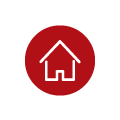|
|
Digital Storytelling
Scholar Year: 2021/2022 - 2S
| Code: |
SIESE07 |
|
Acronym: |
DS |
Courses
Teaching language
English
Intended learning outcomes (Knowledges, skills and competencies to be developed by the students)
The oral tradition of exchange and knowledge transfer was the basis of education
since humans were teaching one each other. The process of creating a digital story,
built on this principle guides the story teller to the choice of a topic that may be of
interest to a particular audience, using digital components. When students build
digital content and online share, develop skills on building multimedia
applications, but also develop critical thinking about the combinations of audio and
visual elements that make up its history. Thus, with this module we intended that
the students, organized in small multinational groups, choose the story they want
to develop the technique for telling that story (comics, video, an interactive
product ...) and the digital elements that will integrate the story. This module must
be oriented to be developed in combination with other modules of this
international semester organizing some of the themes treated in them for the
construction of stories.
This module is intended that students become aware of some digital instruments
that allow the development of digital stories, become aware of the need to think
about the content before online provide them, develop their critical thinking,
enhance their technological literacy and realize the possibilities of these stories in
various contexts.
Syllabus
Storytelling:
- The tradition of storytelling
- How to tell a story
- The process of learning underlying the construction of the story
- The sharing of Story
Digital Storytelling
- Benefits and challenges facing the traditional story
- Components that make up the story
- Tools for building digital stories
- Making of a digital story
Demonstration of the syllabus coherence with the UC intended learning outcomes
The module has been organized in order to permit students to make contacts with the recent systematization of the oral tradition of stories, with their evolution to digital stories, ending with the construction of these stories which allow also to develop their digital skills.
Teaching methodologies
In this module we will adopt an approach focused in the student, looking for an self-discover of the concepts underlying the oral tradition of storytelling and the challenges associated with the use of ICT in the construction and dissemination of digital stories. Students will also be guided in the discovery and exploration of instruments that contribute to the construction of stories.
The theme of the story must be negotiated with the teacher and, if the student is also attending to other modules of this international semester, he can choose any item of that module and negotiate with both teacher to archive que an partial evaluation common to both. In this module the student can use a subject included in other module to construct his stories.
Demonstration of the teaching methodologies coherence with the curricular unit's intended learning outcomes
The module has a first part of a more theoretical nature where students produce some reflective texts on the subject under study and whose learning will be deployed in the second part of the UC to build their own story. It aims to the digital skills of students are developed alongside the specific knowledge about methodologies and tell stories on the theme that the story is about.
Assessment methodologies and evidences
Students will be assessed continuously by their engagement in the proposed activities and also by the quality of products they will develop.
The final score will be distributed as follows:
Digital Portfolio: 10%
Traditional story: 10%
StoryCenter: 20%
Historical Story: 15%
Robots: 10%
My life in Portugal 15%
Final reflection 20%
Bibliography
Advancing learning though IT innovation. (2007). 7 things you should know bout Storytelling. Obtido de EDUCAUSE Learning Initiative: https://library.educause.edu/~/media/files/library/2007/1/eli7021-pdf.pdf
Alterio, M., & McDury, J. (2003). Learning Through Storytelling in Higher Education: Using Reflection and Experience to Improve Learning. London: Routledge.
Frey, N., Fisher, D., & Gonzalez, A. (2010). Literacy 2.0. Bloomington: Solution Tree Press.
Lambert, J. (2009). Digital Storytelling. Capturing lives, creating community (Third Edition ed.). Berkeley: Digital Dinner Press.
Liebe, D. (2013). The power of storytelling to change the world. Obtido de TEDxSMU : https://www.youtube.com/watch?v=6Bo3dpVb5jw
Ochs, E., & Lisa, C. (2009). Living Narrative: Creating Lives in Everyday Storytelling. Harvard: Harvard University Press. Obtido de https://digitalstorytelling.coe.uh.edu/index.cfm?id=44&cid=44
Spilberg, S. (2014). 6 Lessons in storytelling. Obtido de NewsCred: https://insights.newscred.com/steven-spielberg-storytelling/
Tolisano, S. (2015). Digital Storytelling: what is and what is not. Obtido de LangWitchies: http://langwitches.org/blog/2015/08/18/digital-storytelling-what-it-is-and-what-it-is-not/
Truby, J. (2007). The Anatomy of Story: 22 Steps to Becoming a Master Storyteller. London: Faber & Faber.
|
|

